Belt conveyors have been used as an effective method for transporting bulk materials for the past three centuries. Today, they’re one of the most widely used and efficient means of transporting compactable and granular solids.
Belt Types
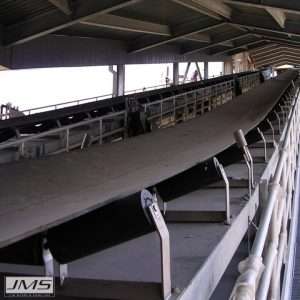 Represent the most cost-effective option available and are ideally suited for straight runs, long conveyors, or conveyors with plows.
Represent the most cost-effective option available and are ideally suited for straight runs, long conveyors, or conveyors with plows.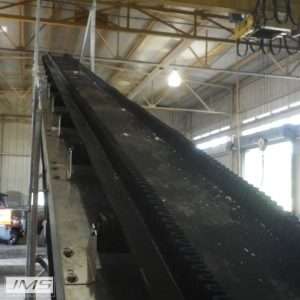 Used when it’s necessary to transition from horizontal to an incline. Walls act to contain the material throughout and eliminate the need for skirtboards.
Used when it’s necessary to transition from horizontal to an incline. Walls act to contain the material throughout and eliminate the need for skirtboards.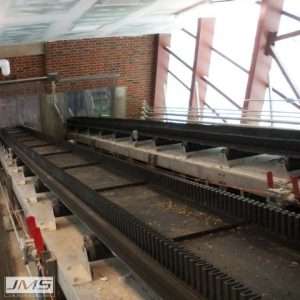
Designed with sidewalls; allow for inclines greater than 30°.
Drive Assemblies
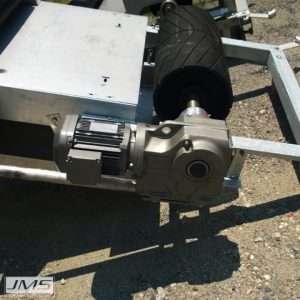
Designed to offer space savings. Ideal for reversing belt application.
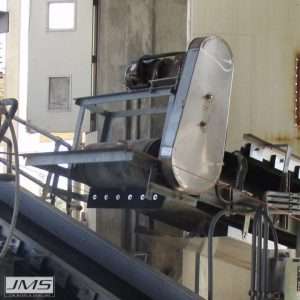
JMS has completed hundreds of similar installations still in operation.
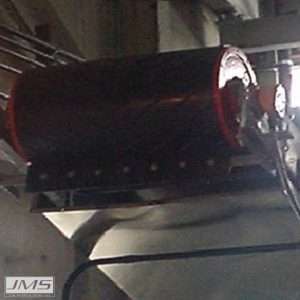
Designed to offer space savings, high efficiency and low maintenance requirements. Requires fewer guards.

Designed to offer space savings. Ideal for reversing belt application.
Add-ons
 Used to provide from 75% to 100% coverage for environmental protection (with allowance for viewing and complete closure for odor control).
Used to provide from 75% to 100% coverage for environmental protection (with allowance for viewing and complete closure for odor control). Features pneumatic, hydraulic, or electromechanical action. Plows can be V-shaped or straight to discharge off one or both sides.
Features pneumatic, hydraulic, or electromechanical action. Plows can be V-shaped or straight to discharge off one or both sides.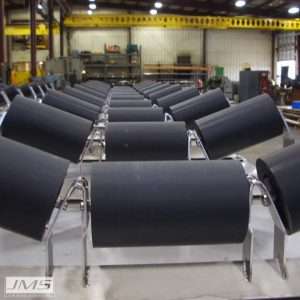 CEMA compliant with stainless steel support frames and non-stick nonmetallic rolls. Sealed for life.
CEMA compliant with stainless steel support frames and non-stick nonmetallic rolls. Sealed for life.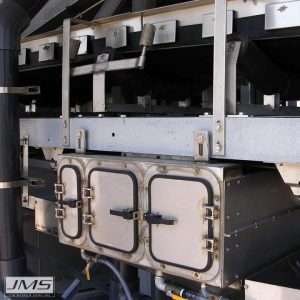 The stainless steel enclosure features access doors. Multiple spray nozzles ensure thorough cleaning.
The stainless steel enclosure features access doors. Multiple spray nozzles ensure thorough cleaning.Key features
- Conveyor path can include inclines and horizontal sections
- Ideal for high-capacity applications
- Low energy consumption
- Primarily stainless steel construction
- Conveyor analysis design software provides exacting sizes
- Conveyor Equipment Manufacturer Association (CEMA) standards
Related videos
Additional Products
Success Story
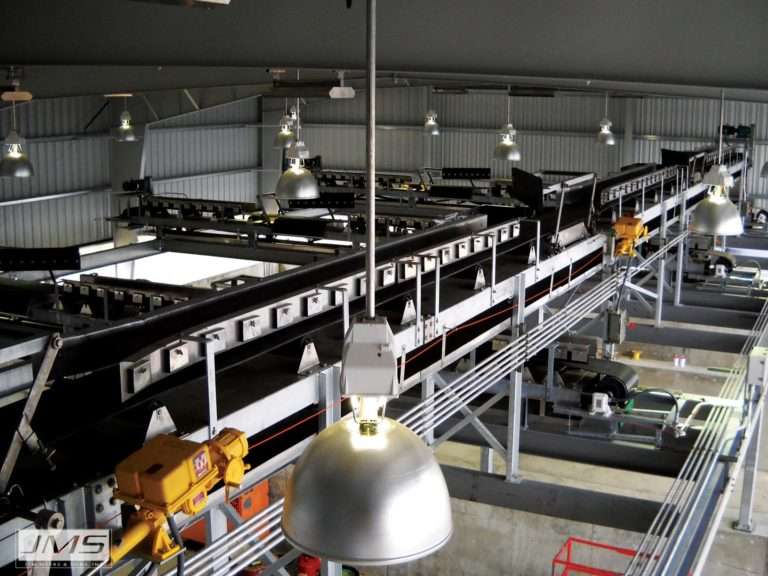
Xenia, Ohio is home to more than 25,000 residents and a hub for manufacturing. In 2006, Greene County put together a master plan for area-wide water management in the Little Miami River Basin to account for future growth. With the help of engineering giant Hazen & Sawyer, a specific plan for the Ford Road Waste Treatment Plant was designed.
JMS was asked to participate by supplying a Distribution Bio-BELT (Belt Conveyor System) with diverter, and four reversing Bio-BELT cross conveyors to distribute biosolids within the storage facility.
“After many years, the systems are running true, and we have experienced low maintenance requirements and outstanding reliability.”
